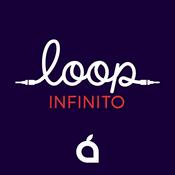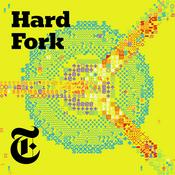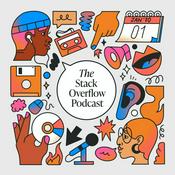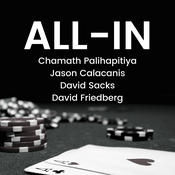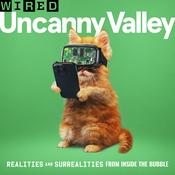251 episodios
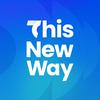
How an Ex-CTO Vibe Codes Production Apps with AI with Paul Xue from Karmic
11/12/2025 | 43 min
In this episode, Aydin sits down with Paul Xue, a self-described “vibe marketer” and former 3x CTO who now runs an AI-native Reddit growth agency. Paul explains why he believes any assumption you made about AI even three months ago is probably wrong today, and how that realization pushed him to pivot away from writing code as a long-term career.He walks through how his team ships production software where ~100% of the code is AI-generated, why 80% of the work now lives in planning and system design, and how new models like Claude Opus 4.5 and Gemini 3 let him literally “go for a walk” while his tools implement features. Along the way, Paul shares real numbers (two years of work vs 10–15 hours), what this means for agencies and devs, how he hires in an AI-native world, and gives a behind-the-scenes tour of the multi-agent workflows powering his Reddit content engine.Timestamps0:00 – Introduction1:01 – What a “vibe marketer” is and why Reddit is a power channel in the LLM era3:01 – From 3x CTO to Reddit-first entrepreneur: deciding coding isn’t future-proof4:06 – GPT-3.5 + end of zero interest rates: when dev agency contracts fell off a cliff6:28 – Adoption curves: senior devs who still don’t use AI and why personality matters7:57 – Running an AI-native shop where ~100% of production code is AI-generated9:48 – Two years vs 10–15 hours: Paul’s personal 10x story on shipping an MVP12:04 – New development workflow: “plan mode” and spending 80% of time on specs18:17 – Claude Opus 4.5, Gemini 3, and “going for a walk” while AI finishes features23:30 – How $60K–$250K apps turn into weekend side projects with vibe coding tools27:12 – Hiring in the AI era: why pure “ticket-taking” devs won’t survive35:12 – Inside an AI-native Reddit engine: n8n workflows, agents, Pinecone & OpenRouterTools & Technologies MentionedReddit – Primary growth and content channel; a highly trusted source for LLM training and citations.ChatGPT / GPT-3.5 – Early model that triggered Paul’s realization that traditional coding careers would change.Claude 3.5 Sonnet & Claude 3.5 Opus / Opus 4.5 – Anthropic models Paul uses for long-running coding, planning, and browser automation.Gemini 3 – Google model Paul uses to quickly generate solid, familiar SaaS-style UI/UX ideas.Cursor – AI-native code editor that turns detailed “plans” into production code with one click.n8n – Automation platform that powers Paul’s multi-step AI workflows for content creation and evaluation.Pinecone – Vector database storing each client’s knowledge base for highly relevant Reddit responses.OpenRouter – Routing layer that lets Paul easily swap and test different language models over time.MCP (Model Context Protocol) – Framework he uses to give agents tool access (e.g., scraping Reddit, reading DBs).Notion – Fast prototyping environment to validate data models and workflows before writing custom code.Zapier – General automation glue in the earliest workflow experiments.Figma – Design tool, now increasingly AI-assisted, for UI/UX mockups.SpecCode – Tool Paul cites for vibe coding HIPAA-compliant applications.Anything – Mobile-focused “vibe coding” platform for building iOS/Android apps on your phone.Fellow – AI meeting assistant that joins meetings, produces summaries/action items, and acts as an AI chief of staff.Subscribe at thisnewway.com to get the step-by-step playbooks, tools, and workflows.

AI Automates Email, Meetings & Internal Workflows with Mike Potter
04/12/2025 | 51 min
Aydin sits down with Mike Potter, CEO and co-founder of Rewind, to talk about how AI is changing both the risk and opportunity landscape for SaaS companies. They cover how AI agents are now deleting real customer data, why backup is more critical than ever, and how Rewind became an AI-native org with dedicated AI ownership, monthly Lunch & Learns, and real internal workflows.Mike walks through the exact N8N workflows he uses to:Auto-triage his Gmail into multiple inboxes using AIGenerate a daily AI brief based on tasks, calendar events, and past email contextAnalyze churn, win/loss, and internal product data using Claude and MCPThey close with Mike’s “dream automation”: a full AI-generated business review that looks across financials, CRM data, and benchmarks.Timestamps:0:00 — Welcome to the show0:31 — Mike’s intro & what Rewind backs up across SaaS ecosystems1:40 — AI agents as a new failure mode and how Rewind “saves you from your AI”4:05 — Turning Rewind into an AI-native company early on4:53 — First attempt at AI-built integrations (why it failed then, why it might work now)7:23 — Developers trading tedious integration maintenance for more interesting AI work9:45 — Code vs architecture: the Shopify webhooks story and handling 1.1B+ events14:03 — Hiring an AI Engineer: scope, responsibilities, and why background mattered15:33 — How Rewind drove AI adoption: Lunch & Learns, “use it in your personal life,” experimentation20:53 — How AI Lunch & Learns actually run across multiple offices and remote folks23:10 — Examples: CS tools, Alloy prototypes, AI video voiceovers, end-to-end workflows25:13 — Churn workflows: combining uninstall reasons from multiple marketplaces into Claude27:06 — Win/loss and internal analytics using Claude Projects + MCP server into an internal DB29:14 — Choosing between Claude, ChatGPT, and Gemini depending on the task (and re-testing every few months)31:23 — Mike’s Gmail system: multiple inboxes + N8N + AI classification36:07 — Inside the email-classifier prompt and AI-powered spam that beats Gmail filters41:34 — The “Daily AI Brief”: pulling tasks, meetings, and prior email threads into a single morning email45:02 — Letting AI write and debug N8N workflows (and how assistants in tools are getting better)48:58 — Wishlist: automated AI business review across finance, Salesforce, and SaaS benchmarks51:23 — Closing thoughts: so many useful tools are possible, but GTM is the hard partTools & Technologies MentionedRewind – Backup and restore for mission-critical SaaS applications.Claude – LLM used for analysis, projects, agents, and internal tools.ChatGPT / OpenAI (GPT-4.1, GPT-4.1 mini) – LLMs used for code, prompts, and workflow JSON.N8N – Automation platform used to build email and daily-brief workflows.Gmail – Email client where AI-powered labels drive multiple inboxes.Google Calendar – Calendar data powering the daily AI agenda.Google Tasks – Task list feeding into the morning brief email.MCP (Model Context Protocol) – Connects Claude to Rewind’s internal databases.Alloy – Tool for building interactive product UI prototypes.Salesforce – CRM used for pipeline, churn, and win/loss analysis.Gumloop – Workflow tool with an embedded AI assistant.Zapier – Automation platform referenced for plain-English workflow creation.Fellow – AI meeting assistant for summaries, action items, and insights.Subscribe at thisnewway.com to get the step-by-step playbooks, tools, and workflows.

AI Lets Kids Build Their Own Learning Games with Aydin Mirzaee
27/11/2025 | 28 min
In this special “build with me” episode, Aydin and Manuela walk through how Aydin used Lovable to build a unicorn-themed multiplication and division game with his nine-year-old twin daughters. They show how to go from a spoken idea to a working web app in minutes, then keep iterating to add playful design, timers, division mode, mix mode, and a leaderboard—using it as a fun way to teach kids both math and how to think and communicate clearly with AI.The episode closes with a push for parents, aunts, uncles, and anyone with kids in their lives to start doing, not just watching: use AI builders like Lovable as a playful way to get kids hands-on with AI, programming, and creative problem solving.Timestamps00:00 - Welcome to the episode01:07 – Why Aydin wants parents to teach kids AI through projects01:40 – Twin nine-year-olds and the idea for a multiplication game03:33 – Screen share: introducing Lovable and Super Whisper05:44 – Dictating the first prompt for the multiplication quiz08:13 – First working version of the game and scoring demo11:25 – Adding unicorn theme, confetti, poop emoji, and multiple choice13:49 – Using Lovable’s free plan and email accounts for kids16:11 – Publishing the game and sharing it via a public link17:22 – Adding division mode, mix mode, and a timer22:12 – Demoing division mode and brainstorming a leaderboard24:38 – Explaining why the app now needs a database27:41 – Registration, login, and live leaderboards in action29:50 – “Now is the time to build” with tools like Lovable30:51 – Parting advice for parents, aunts, and uncles: start doing, not just watchingTools & Technologies Mentioned:Lovable (lovable.dev)Super WhisperLovable’s built-in voice-to-textCloud database (via Lovable)Bolt.newClaudeChatGPTGoogle/Gmail family accounts for kidsFellow.aiSubscribe at thisnewway.com to get the step-by-step playbooks, tools, and workflows.

AI Supercharges Content Marketing & Workflow Automation with Ryan McCready
20/11/2025 | 44 min
In this episode, Aydin sits down with Ryan McCready, who went from hating AI to becoming one of the most creative AI-powered content builders on the internet. After getting laid off in mid-2025, Ryan realized that every job interview demanded AI fluency. So he went all-in, teaching himself Zapier, Lovable, Supabase, and advanced prompting to engineer a “Content Factory” that turns a webinar into blog posts, clips, and social content in minutes.He shares the mindset shift from “AI is plagiarism” to “AI is an input-output engine,” why content engineering is the future, what makes AI workflows actually work, and how breaking big tasks into many small steps is the secret to non-sloppy AI content.You’ll see how he built a 30-step Zapier workflow that analyzes a webinar transcript, extracts frameworks and insights, turns them into pitches, builds outlines, writes social posts, and even generates clip candidates for Descript. If you create content or run marketing—this one is a masterclass.Timestamps0:23.00 – Why he believed AI was a “plagiarism machine”2:04.00 – Getting laid off and realizing every employer wanted AI skills4:37.00 – The workflow that kickstarted his learning (LinkedIn voice extraction + employee advocacy shares)5:40.00 – Learning Lovable and Supabase by building real projects6:51.00 – Why “everyone is a builder now” because of AI tools7:52.00 – Introducing “Content Engineering” and why most marketers can’t do it9:03.00 – Example: turning a webinar into 10+ pieces of content10:58.00 – Why webinars usually die after they’re aired—and why that’s a waste11:43.00 – The “Webinar Content Flywheel” teaser16:30.00 – Why Ryan moved back from n8n to Zapier17:55.00 – Zapier vs. n8n: simplicity, stability, and architecture19:03.00 – “Start small”: a two-step Zap example20:09.00 – Interface demo: uploading a transcript and hitting “Go”21:22.00 – Why Zapier Interfaces make deployment easy22:40.00 – Step-by-step breakdown of the workflow24:06.00 – Example: webinar analysis output (themes, chapters, frameworks)27:02.00 – Creating three blog pitches from the transcript30:43.00 – Sending the pitches to Slack for review31:03.00 – Clip extraction workflow + Descript integration32:14.00 – How he uses Descript’s “Underlord” to auto-cut clips33:20.00 – Why this beats automated clip tools like Riverside for B2B35:02.00 – Social content workflow (framework angle, data angle, hot take, wildcard)37:12.00 – Why prompting manually is wasteful—build once, automate forever40:11.00 – “Big → small → big” framework: the secret to non-sloppy AI content41:21.00 – Google’s “AI content penalty” myth, according to Ryan42:47.00 – Why your input quality determines whether your AI output is good43:44.00 – What excites him most in the next 12 monthsTools & Technologies MentionedZapier: Automation platform used to chain 30+ steps together: analysis, pitch creation, clip extraction, social content, Notion updates, etc.AI by Zapier: Zapier’s built-in LLM module used for analysis, extraction, outline generation, and writing.n8n: Open-source workflow automation platform. Ryan tested it, but ultimately moved back to Zapier for stability and structure.Lovable: AI-enabled “vibe coding” tool that turns prompts into functional web apps.Supabase: A database + backend platform used for storing structured content data from builds.Descript (Underlord): Video editing tool with an AI agent that cuts clips based on transcript timecodes generated by the workflow.Notion: Used as the source of truth for storing transcripts, outlines, clip docs, and the full content tracker.Claude / ChatGPT: Used for second-pass expansion—turning outlines or social angles into fully polished blog posts and posts.Fellow.ai: AI meeting assistant—summarizes meetings, tracks decisions, and generates insights and performance summaries.Subscribe at thisnewway.com to get the step-by-step playbooks, tools, and workflows.

AI Replaces Paid SaaS Tools by Letting You Build Your Own | Scott Knowles - Co-founder of Mello
13/11/2025 | 49 min
In this episode of This New Way, Aydin chats with Scott Knowles, the co-founder of Mello, a digital process manager designed to automate human-centric workflows. Scott shares how he reentered software development after a six-year hiatus — not through online courses or bootcamps, but through ChatGPT. With AI as his co-pilot, he rebuilt his coding skills, created software from scratch, and automated complex systems like cold outreach engines and data pipelines — all for free or nearly free. The episode is a hands-on masterclass in learning, building, and automating with AI.Timestamps00:00 - Intro0:29 – 1:12 — Introduction: Scott’s background in computer engineering and management consulting2:00 – 4:18 — Founding and selling an OKR software company; early startup experience4:23 – 5:06 — What Mello is: a “digital process manager” that connects humans the way Zapier connects software5:36 – 7:00 — Returning to coding after six years thanks to ChatGPT7:42 – 8:15 — How ChatGPT helped him relearn code “like slang you forgot”9:03 – 10:13 — Learning new skills: how to ask the right questions as a beginner10:41 – 11:27 — Using ChatGPT to scope and plan projects instead of asking for instant results13:00 – 14:03 — The importance of high-level questioning before diving into code15:06 – 16:21 — When to stop and ask, “Is there a simpler way?” instead of getting lost in rabbit holes17:05 – 18:07 — The “three tries rule” for debugging with ChatGPT18:26 – 18:50 — Sometimes the fix is on Reddit: mixing AI and human answers22:01 – 27:21 — Demo: Scott’s TikTok “routine scraper” app built entirely with ChatGPT-generated code27:33 – 28:14 — How the scraper uses OCR, captions, and transcripts to build structured data28:58 – 30:06 — Using ChatGPT as a code generator — no manual coding required30:49 – 32:10 — Introduction to N8N: self-hosted automation for free cold outreach33:01 – 36:33 — Step-by-step breakdown of Scott’s automated email system using N8N and Google Sheets38:32 – 39:09 — Building high-quality prompts for personalized emails40:00 – 42:06 — How N8N automations replace tools like Clay and Smartlead42:33 – 43:09 — Watching the automation run in real time43:39 – 44:14 — Human-in-the-loop safety: drafts before sending46:02 – 47:05 — Scott on the future of AI and human collaboration47:17 – 48:31 — Aydin on “vibe coding” and how LLMs democratize software creation48:55 – 49:13 — Closing thoughts: start small, get quick wins, build momentumTools & Technologies MentionedChatGPT — Used as a real-time coding tutor and co-developer to build entire applications.Mello — Scott’s product; a digital process manager that automates human-to-human workflows.Zapier / N8N — Workflow automation tools; N8N is self-hostable and used in Scott’s cold outreach automation.Supabase — Open-source database used to store and serve data for the TikTok scraper app.Playwright — Browser automation library for scraping TikTok videos.VS Code + CodeX Plugin — Integrated code editing environment that connects directly to ChatGPT for automated coding.Fellow — AI meeting assistant that summarizes meetings, tracks action items, and integrates with other tools.OpenAI API — Powers many of the automation and text-cleaning features within Scott’s projects.Subscribe at thisnewway.com to get the step-by-step playbooks, tools, and workflows.
Más podcasts de Tecnología
Podcasts a la moda de Tecnología
Acerca de This New Way
Escucha This New Way, Programación JavaScript y Desarrollo Web con midudev y muchos más podcasts de todo el mundo con la aplicación de radio.net

Descarga la app gratuita: radio.net
- Añadir radios y podcasts a favoritos
- Transmisión por Wi-Fi y Bluetooth
- Carplay & Android Auto compatible
- Muchas otras funciones de la app
Descarga la app gratuita: radio.net
- Añadir radios y podcasts a favoritos
- Transmisión por Wi-Fi y Bluetooth
- Carplay & Android Auto compatible
- Muchas otras funciones de la app


This New Way
Descarga la app,
Escucha.

